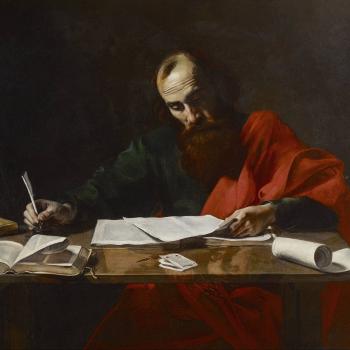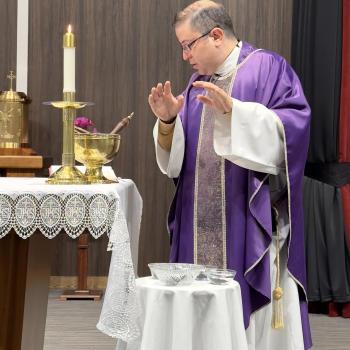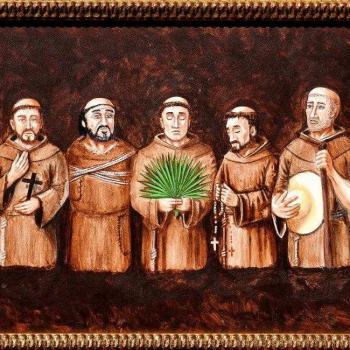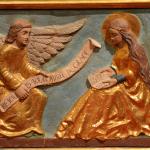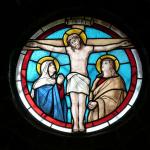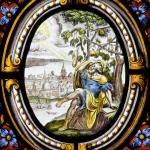On May 24th, 2008, I had the priviledge to participate in the Corpus Domini processions of Oriveto and Bolsena, Italy. These cities are the genesis of this great feast of the Church’s calendar.
During the summer of 1263, Peter of Prague traveled to Rome on a pilgrimage to pray at the tomb of Saint Peter bringing with him many doubts about his faith and his vocation as a priest. After spending some time there, he began his journey home and stopped in the village of Bolsena north of Rome for the night.
There he visited the Church of Saint Cristina where the relics of this local 3rd century martyr were kept. His visit at the tomb of Cristina who was willing to die for her faith shook Peter’s faith once again. Before celebrating Mass, it is said, he prayed “for the strength of soul and extreme abandonment that God gives to those who completely trust in him.”
As he celebrated Mass the host began to bleed, and the blood fell on the corporal which lay on the altar (altar pictured above). Amazed and overjoyed, Peter traveled to the neighboring town of Orvieto where Pope Urban IV was staying. The Pope immediately sent his representative to bring the corporal to Oriveto for him to inspect. His representative did as told and once the corporal arrived to Orvieto, it was kept at the cathedral there rather than at the small country village of Bolsena.
The following year, 1264, in light of this great miracle, Urban IV declared the Feast of the Body and Blood of Our Lord, Corpus Christi, which today 748 year later, we continue to celebrate.
Urban commissioned Saint Thomas Aquinas to write the liturgy for this new feast while he lived and taught at Orvieto, living under the shadow of the cathedral where the corporal was kept. Today the corporal is kept in the Chapel of the Corporal, pictured below.
Saint Thomas composed not only the liturgy but also a beautiful hymn which we stil sing today, the Pange Lingua which concludes with two famous stanzas sung at Benediction, the Tantun Ergo.
Each year the corporal is brought out in procession throughout the streets of Orvieto. The reliquary also serves as a monstrance, so a consecrated host is also taken out in procession. Later the same day a procession is held in Bolsena where the streets are lined up with beautiful flower petal designs. I had the unexpected opportunity to carry the corporal during the procession for several blocks. As I carried it, we stopped in front the military barracks of Orvieto for the soldiers to give a gun salute to the Blessed Sacrament.
It would be worth planning a trip to Italy around this Solemnity to take part in this beautiful procession and expression of our Catholic faith. For more pictures of this beautiful day, you can click here: Corpus Domini Oriveto







